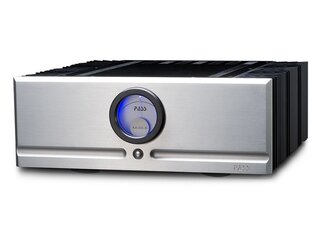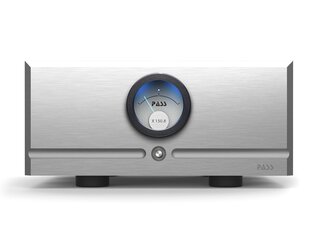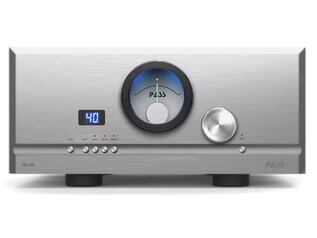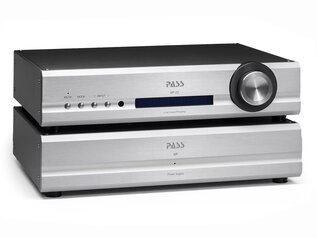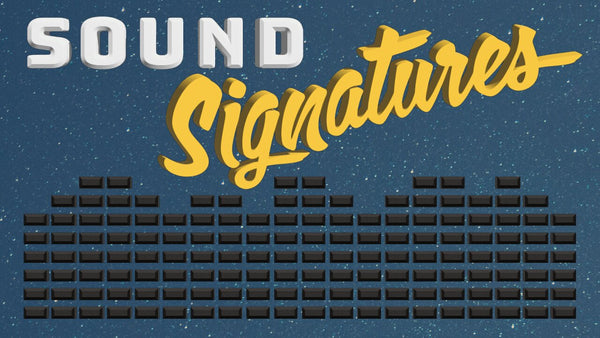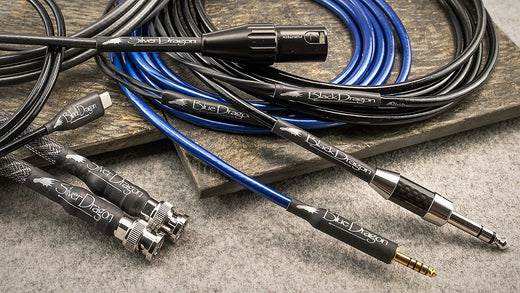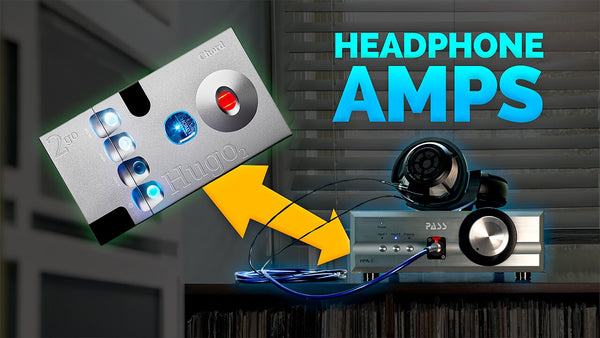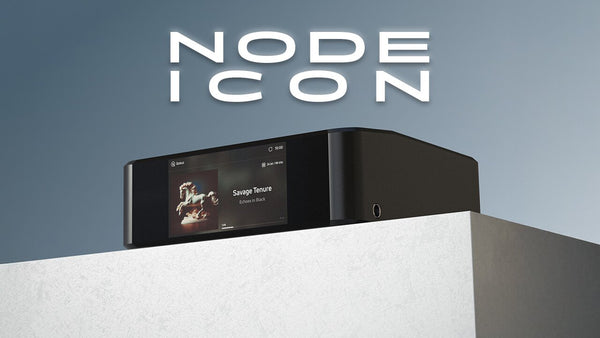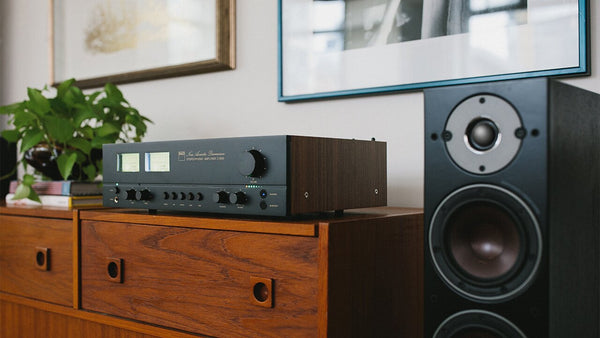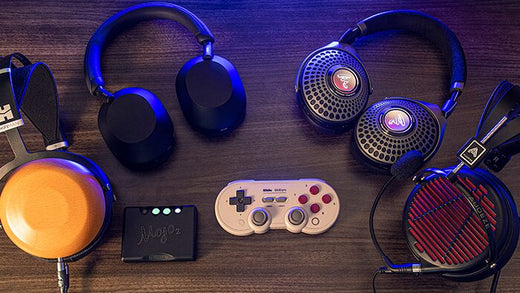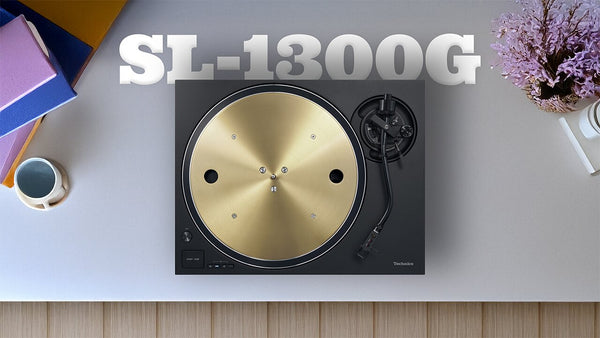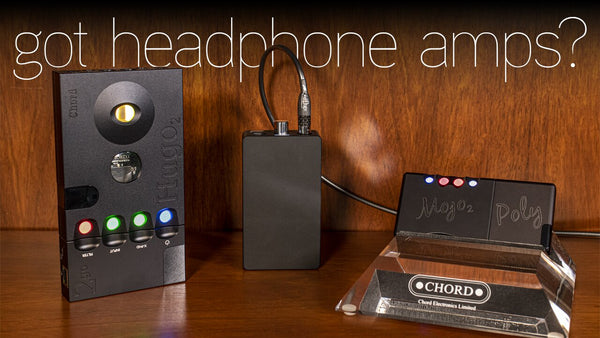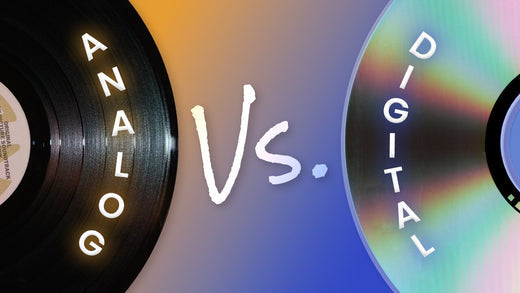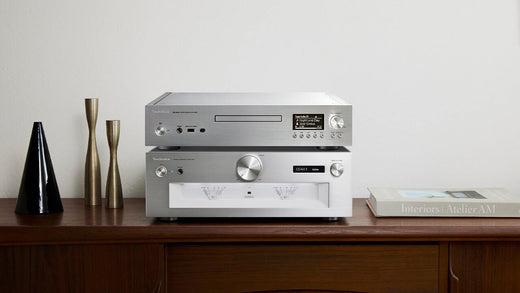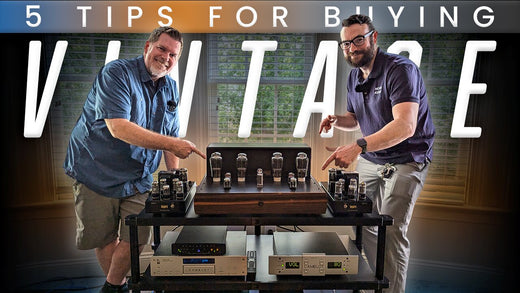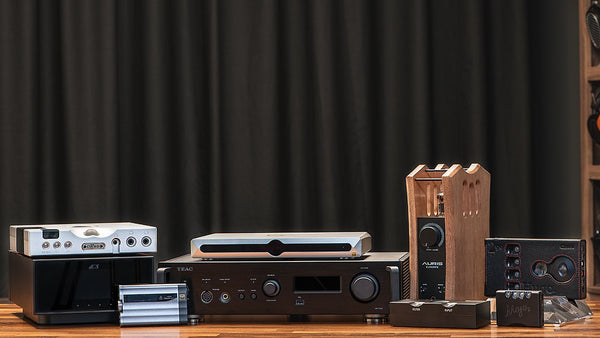Pass Labs Guide & How Nelson Pass Revolutionized Class A Audio

Discover Pass Labs' Celebrated Amplifiers
Nelson Pass has made a name for himself with Class A amplifier designs and today, his company Pass Labs is regarded as one of the leading amplifier manufacturers in the audiophile community. Pass Labs makes a range of Class A, A/B, headphone and integrated amplifiers, as well as line and phono preamplifiers.
Why Pass Labs?
Here at Moon Audio, we vet every manufacturer we carry because we want to provide our customers with brands that we support and are proud to use ourselves. Carrying Pass Labs products was a no-brainer for Moon Audio Owner and Founder Drew Baird, P.E., who says the company's products are the perfect blend of solid-state and tube amplification melded into one device.
"Pass Labs products are the perfect choice for folks who want the dynamics of a solid-state amplifier and the warmth of a tube amplifier. Pass Labs amplifiers are a meld of both situations. They specialize in Class A amplification, and while they do have Class A/B amplification, all of their A/B amps start in Class A at low volumes and when there are instantaneous peaks for power, they switch over to A/B," Said Drew Baird, P.E.
"So all of these Pass Labs amplifiers are very musical yet incredibly detailed, controlled, and defined-sounding. You get the best of both worlds. Some Pass Labs amps have a sweeter tonality to them like the XA25 and XA30.8, which are great options for people that really want a sweet sound — Say somebody that listens to smoky Jazz.
The INT-60 is hands down the best bang for your buck and also the best seller in the Pass Labs lineup. It checks all the boxes for audiophiles — Plenty of power, plenty of dynamics, and plenty of musicality from the class. At the end of the day, Pass Labs products are for the person who wants a little bit of tubes and a little bit of solid-state melded into one device."
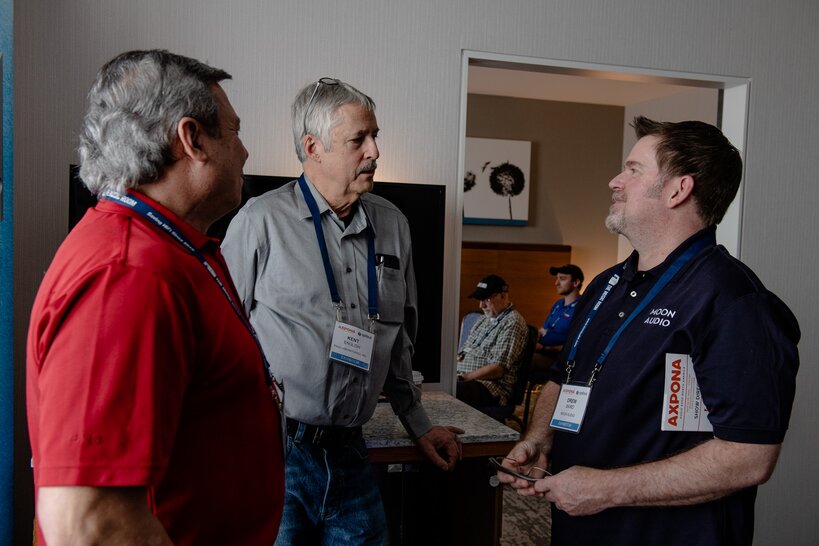
Moon Audio Owner and Founder Drew Baird, P.E., chats with Pass Labs North American Sales Director Kent English
From Startup to Success
Like many great success stories, Pass Labs was founded in 1991 out of Nelson Pass' California home. Beginning with early prototypes of a single-ended Class A Amplifier, Pass Labs has become legendary for popularizing solid-state Class A Power Amplifiers.
Starting an audio company was no feat for Nelson Pass who started assembling loudspeakers at just 14 years old. While attending the University of California, Davis, Pass co-founded a speaker company called PMA and later went to work for loudspeaker maker ESS. It was there that Pass learned all the fundamentals of crossover design, speaker testing, and quality control, gearing him up to start his own venture as soon as he graduated UC Davis. With ESS colleague Rene Besne, Pass co-founded Threshold Electronics — Now Threshold Audio — in 1974, serving as president until 1991. During his time at Threshold Electronics Pass developed the first dramatically biased Class A amplifier circuit, developed a fully cascode audio power amplifier, and developed the Stasis stereo preamplifier and power amplifier — The Designs for which were later licensed to Nakamichi. Nelson Pass eventually sold Threshold Electronics in 1991 and started his next adventure — Pass Labs.
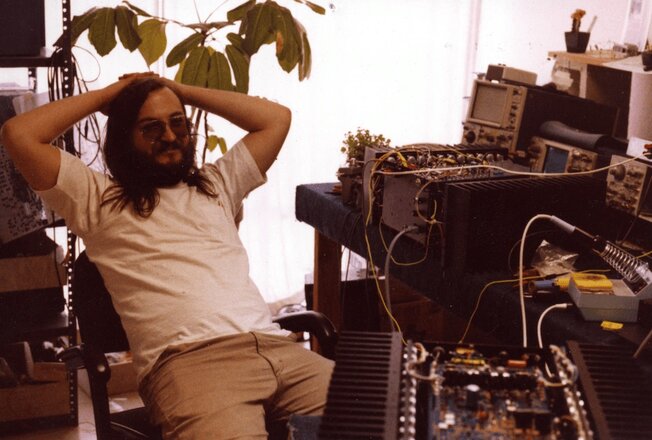
Pass Labs Founder Nelson Pass, date unknown
Early Days at Pass Labs
The first product, the Aleph 0, shipped in 1992. Up to this point, Nelson Pass and Mike Burley had been constructing an in-house machine shop with three home-built CNC milling machines to produce the amplifiers when Pass' designs were finished.
The Aleph 0 was a mono-block design rated at 70W into 8 ohms, and uniquely used three gain stages of power MOSFETS including a push-pull output stage biased by a big constant current source. It operated as a single-ended Class A up to its 70W rating and in push-pull Class A higher wattage.
A stereo version of the Aleph 0, called the Aleph 0s followed after, along with a preamp called the Aleph P. A larger version of the Aleph 0 called the Aleph 1 shipped the following year, and was a mono-block rated at 150W. Many other Alephs followed, bringing the eventual Aleph series lineup to 14 products. This included the Aleph D1 Digital-to-Analog Converter (DAC).
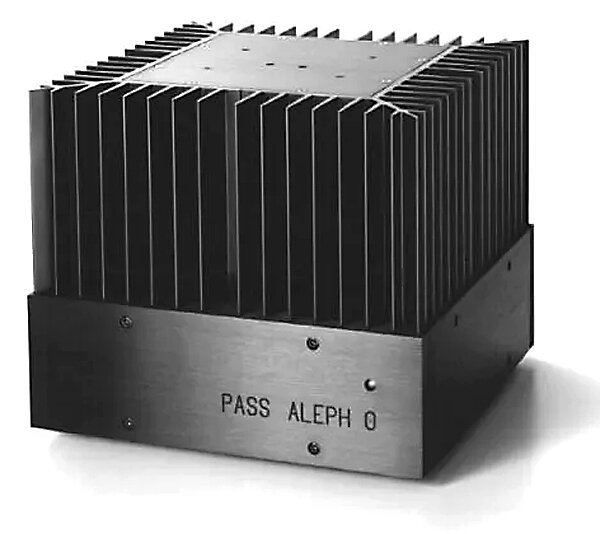
An excerpt from Nelson Pass, Aleph 0 Product Manual
"The Aleph 0 is a single-ended Class A audio power amplifier, the first product produced by Pass Laboratories. It combines completely new design thought applied to a traditional topology and the experience of twenty-five years of amplifier design. This power amplifier flows from a commitment to create the best-sounding product: a simple circuit with the most natural characteristics. The Aleph 0 integrates power MOSFET devices and single-ended Class A operation in a simple topology in order to deliver natural sound, the reference for naturalness being taken as the acoustic characteristic of air. Consuming four times the rated output power, single-ended Class A makes ordinary push-pull circuits appear comparatively efficient. This inefficiency has been a deterrent to designers, limiting this "king" of Class A circuits to preamps and input stages," Said Nelson Pass.
"I feel that in specialized and demanding applications, the energy penalty is worth the purity of performance obtainable from single-ended Class A operation. This purity delivers the most musicality and listening satisfaction per watt of any operating mode. Over the years I have remained fascinated by the characteristic sound of the single-ended topology, but until now I did not have the opportunity to bring such a product to market."
Pictured: Pass Labs Aleph 0 Amplifier
In 1994, Nelson Pass was joined by one of his former Threshold employees, Wayne Colburn, who now served as Pass' business partner. Colburn has been at the forefront of many Pass Labs designs over the years, working on an improved version of the company's first preamp and a new phono stage. Colburn's work would grant the company two patents, one of them the design that became the SuperSymmetric circuit in use today.
A year later, Colburn and Pass were joined by Joe Sammut, previous partner at Threshold, now serving as Pass Labs' director of operations. That same year, Pass Labs released the 30W Aleph 3 and Aleph L preamp. In 1996, Colburn's previous colleague at Krell Audio, Desmond Harrington joined Pass Labs.
Harrington's signature mechanical design work would be showcased in the soon-to-be-released X1000 monoblock power amplifier, the first amplifier using the patented SuperSymmetric topology, replacing the Alpha topology. In 1998, the X1000 was released, achieving 1000W with high performance, local feedback, and only two gain stages: A cascoded differential pair of transistors and a large bank of complementary output followers. This groundbreaking design paved the way for Pass Labs' future successes, forming the amplifier products to the present day. The X1000 was followed by the mono-block X600, the stereo X350, and the stereo X250 and X150 models.
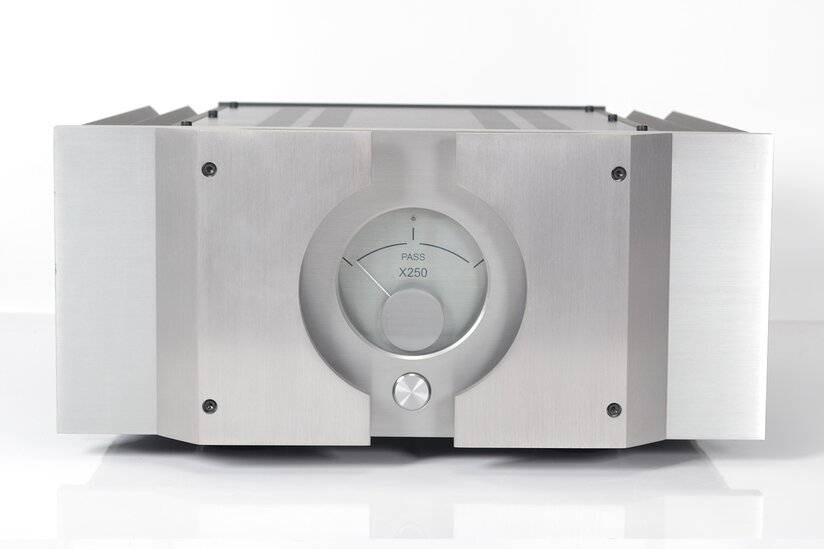
Pictured: Pass Labs X250 Stereo Power Amplifier
In 1999, Joe Sammut took over as President of Pass Labs, followed by Desmond Harrington in 2007; he remains in this role today. With presidential duties off his plate, Nelson Pass devoted his time to product development. Over the years, Pass has secured seven patents. In 2013, Jam Somasundram, formerly of Cary Audio, came on board at Pass Labs. His first project, the HPA-1 is Pass Labs' first headphone amplifier.
Pass Labs Today
The Early 2000s were filled with many successes for Pass Labs. The first XA amplifiers were released in 2002, combining the X and Aleph technology into balanced single-ended Class A amplifiers. The XA200 was rated at 200W mono, the XA160 was 160W. The following year, Pass Labs produced the X150.5, the first major improvement of the X150 amplifier. It was followed with ".5" revisions to the other X amplifiers through 2003 and 2005. In 2007, Pass Labs applied the ".5" advances to the XA series of amplifiers — The XA100.5, XA60.5, and XA30.5.
Today, Pass Labs produces a range of Class A, Class A/B, integrated, and headphone amplifiers; as well as line and phono preamplifiers. As far as what's next, it's safe to say new ideas are always on the table.
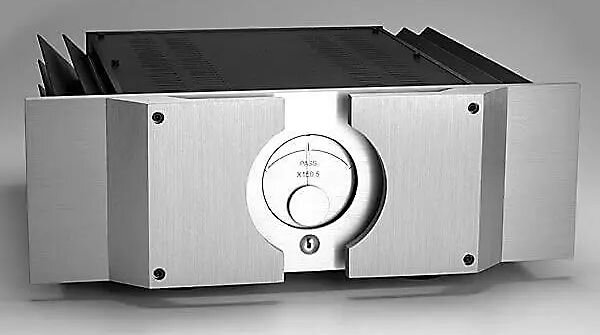
Pictured: Pass Labs X150.5 Amplifier
The Current Pass Labs Product Lineup
Phono Preamplifiers
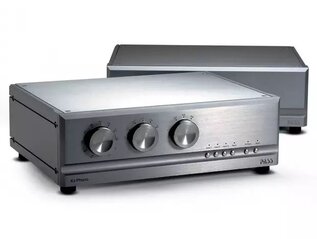
- Xs Phono (pictured)
- XP-27
- XP-17
Class A & A/B Amplifiers: What's the Difference
The Aleph 0 set the stage for the years of Class A amplifiers to come down the production line. Class A amplifiers offer a simple design, high fidelity, and no crossover distortion. They're coveted by many audiophiles for their true-to-recording sound. Class A/B amplifiers are more efficient than Class A amps, and there is minimal crossover distortion. These amps dominate the consumer market.
What is the difference between a Class A and Class A/B amplifier? Simply put, it has to do with the point at which the transistors are biased. With Class A, the transistor is biased so that over the whole cycle of the RF input, the transistor operates within its linear portion. With Class A/B, part of the cycle of the input is in fact turning the transistor off.
In Class A, all of the amplifier's output devices must be conducting through the full 360-degree cycle of a waveform. Now, Class A can be broken down into single-ended and push/pull amplifiers. Push/pull moves away from the explanation above by utilizing output devices in pairs. While both devices are conducting through the full 360-degree cycle, one device will shoulder more of the load during the positive portion of the cycle, while the other handles more of the negative cycle. The primary advantage is reduced distortion relative to single-ended designs, as even order harmonics are canceled out. In addition, push/pull Class A designs are less susceptible to hum, while single-ended designs tend to require special attention to the power supply to mitigate this issue.
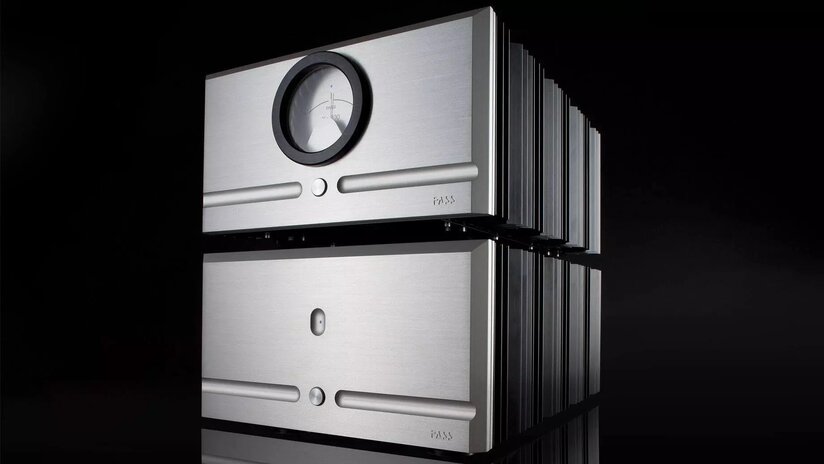
Pictured: Pass Labs Class A XS300 Amplifier
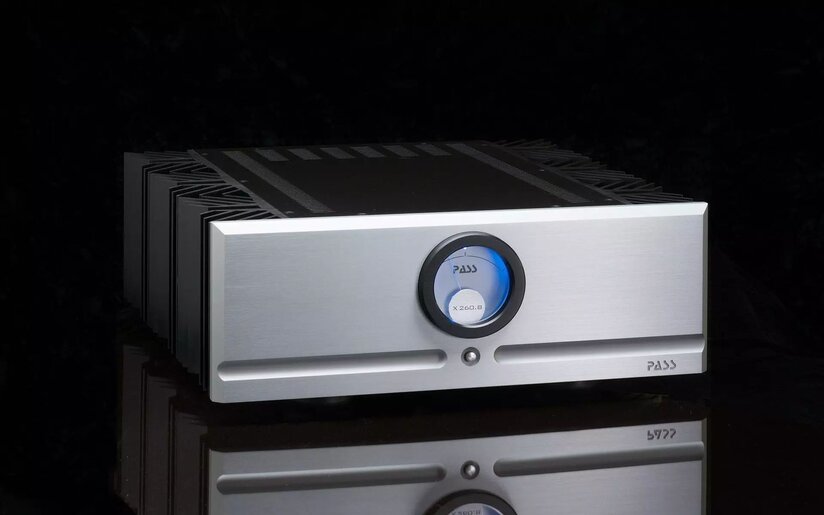
Pictured: Pass Labs Class A/B X260.8 Amplifier
Class A/B amps use a push-pull arrangement so that only half the output devices are conducting at any given time. One-half covers the +180-degree portion of the waveform while the other covers the -180-degree section. Class A/B amplifiers bump that up to about 181-200 degrees. By doing this, there is far less potential for a “gap” in the cycle to occur, and consequently, crossover distortion is pushed down to the point where it’s of no consequence. Some Class A/B designs take things a step further in their quest to banish crossover distortion, operating in pure Class A mode for up to a few watts of power. This does give up some efficiency when operating at low levels but still ensures that the amplifier doesn’t turn into a furnace when delivering large amounts of power.
Class A Amplifiers at Moon Audio
XA25 Power Amplifier
The XA25 Power Amplifier offers great sound at slightly lower power, without frills, at a lower price than the XA30.8. It embodies new components and innovative circuits coupled with the best elements of the previous generation. Degeneration, “the other form of feedback,” has been eliminated. The output stage consists of a single pair of 800 watt new-generation output transistors operating push-pull Class A. The result is faster, lower distortion, lower noise, higher damping, and larger Class A operating envelope into low impedance loudspeakers, all in a simple three-stage circuit with a total of three pairs of push-pull gain transistors. The XA25 delivers plenty of low-frequency energy, a nice midrange, low noise, and is really well controlled. It's got a more tube-like sound than the 30.8. It tends to be more flexible with speaker pairings than some other Pass Labs amps.
Specifications
- Class: A
- Type: Stereo
- Gain (dB): 20
- Inputs: RCA
- Power Output/ch (8 ohm): 25
- Number of Output Devices: 4
- Power Consumption (Watts): 240
- Standby Power Consumption (Watts): <1
- Number of Chassis: 1
- Unit Dimension, in inches: 17" W x 17.25" D x 6" H
- Unit Weight: 48.5 lbs.

XA30.8 Stereo Power Amplifier
The XA30.8 Stereo Power Amplifier is an exceptional stereo power amplifier, providing the optimal balance between performance and cost. High-biased MOSFETs provide higher-power class A operation, direct-coupled front-end circuitry for exceptionally high stability and larger, more robust heat sinks similar to those of the larger .8 amplifiers. An improvement over the .5 version, the XA 30.8 features a better power supply, lower noise, much less degeneration, no caps in the signal path, and no frequency compensation. What this means for the listener is better low-level detail, better dynamic contrast (especially at low levels), better phase coherence, and better signal balance.
Specifications
- Class: A
- Type: Stereo
- Gain (dB): 26
- Inputs: XLR/RCA
- Power Output/ch (8 ohm): 30
- Number of Output Devices: 40
- Power Consumption (Watts): 400
- Standby Power Consumption (Watts): <1
- Number of Chassis: 1
- Unit Dimension, in inches: 19" W x 21.25" D x 7.5" H
- Unit Weight: 88 lbs.
XA60.8 Monoblock Amplifier
The XA60.8 Monoblock Amplifier is a part of the .8 amplifier line that delivers listeners monoblock performance: Dedicated power supplies for each channel, dedicated circuitry for each channel, and dedicated chassis' for each channel. As a result, you get a cleaner, better-defined image and soundstage. The XA60.8 achieves a level of focus and intimacy normally associated with tube amplifiers, all while providing greater control and power.
Specifications
- Class: A
- Type: Mono
- Gain (dB): 26
- Inputs: XLR/RCA
- Power Output/ch (8 ohm): 60
- Number of Output Devices: 40
- Power Consumption (Watts): 400
- Standby Power Consumption (Watts): <1
- Number of Chassis: 1
- Unit Dimension, in inches: 19" W x 21.25" D x 7.5" H
- Unit Weight: 88 lbs.
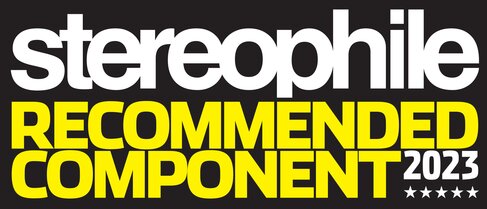
Class A/B Amplifiers at Moon Audio
X150.8 Stereo Amplifier
As the entry-level class A/B stereo power .8 amplifier, the X150.8 Stereo Amplifier features many of the same technical and sonic attributes of its larger siblings. It features 150 watts per channel, 100K ohm input impedance, and operates “higher” into Class A than its predecessors. But knowing the ear is not a microphone and the brain is not a tape recorder, Lass Labs designed this model to bridge the gap between measured performance and outstanding subjective musical experience. Simply put, the X150.8 will compel you to listen to your entire music collection again and again.
Specifications
- Class: AB
- Type: Stereo
- Gain (dB): 26
- Inputs: XLR/RCA
- Power Output/ch (8 ohm): 150
- Number of Output Devices: 40
- Power Consumption (Watts): 375
- Standby Power Consumption (Watts): <1
- Number of Chassis: 1
- Unit Dimension, in inches: 19" W x 21.25" D x 7.5" H
- Unit Weight: 88 lbs.
X250.8 Stereo Amplifier
The stereo class A/B model, the X250.8 Stereo Amplifier represents a step up in power and performance from the X150.8 and, like all Pass Labs products, has been painstakingly designed, tweaked, and redesigned and fine-tuned to deliver maximum musical enjoyment. This hard work and creativity results in a greater “look-back” at the original musical performance, conveying additional insight into the artist’s creative intent.
Specifications
- Class: AB
- Type: Stereo
- Gain (dB): 26
- Inputs: XLR/RCA
- Power Output/ch (8 ohm): 250
- Number of Output Devices: 56
- Power Consumption (Watts): 450
- Standby Power Consumption (Watts): <1
- Number of Chassis: 1
- Unit Dimension, in inches: 19" W x 21.25" H x 9" D
- Unit Weight: 100 lbs.
X260.8 Monoblock Amplifier
The X260.8 Monoblock Amplifiers are incredibly well-built, well-engineered A/B Class amps that can drive even the most challenging loudspeakers. The X260.8 features high-power MOSFET transistors and extra-large output stages that are used in the entire .8 line. It delivers 260W of power into 8 ohms and combines power and finesse with all the benefits of monoblock performance.
Specifications
- Class: AB
- Type: Mono
- Gain (dB): 26
- Inputs: XLR/RCA
- Power Output/ch (8 ohm): 260
- Number of Output Devices: 40
- Power Consumption (Watts): 375
- Standby Power Consumption (Watts): <1
- Number of Chassis: 1
- Unit Dimension, in inches: 19" W x 21.25" D x 7.5" H
- Unit Weight: 88 lbs.
Integrated Amplifiers
According to Pass Lab's website, their integrated amplifiers have operational points optimized for higher wattage requirements, great versatility and stability, and perform spectacularly with difficult speaker loads.
INT-25 Amplifier
The INT-25 Amplifier combines the XA25 power amp with a preamp stage that shares its lineage with the HPA-1 headphone amplifier. A smaller stereo Class A amplifier at a lower price, the INT-25 takes advantage of the lower power requirements to have simpler single-ended circuitry and fewer parts in the signal path. This also allows the elimination of degeneration in all stages.
Specifications
- Class: A (Integrated)
- Type: Stereo
- Gain (dB): 29/35
- Volume Control (1dB steps): 63dB
- Remote: Yes
- Inputs: 3 (RCA)
- Outputs: 0
- Power Output/ch (8 ohm): 25 Watts
- Power Consumption (Watts): 200
- Standby Power Consumption (Watts): <1
- Unit Dimension, in inches: 17" W x 17.375" H x 6" D
- Unit Weight: 49 lbs.

INT-60 Integrated Amplifier
The INT-60 Integrated Amplifier presents 60 glorious watts per channel into 8 ohms, and doesn't leave class A until 30 watts thanks to its high-bias operation. The larger class A operating envelope brings lower distortion and greater loudspeaker control, delivering higher-quality musical fidelity for your enjoyment. The INT-60 has four line-level inputs: two offer single-ended (RCA) or balanced (LR) jacks and two offer single-ended only.
Specifications
- Class: AB (Integrated)
- Type: Stereo
- Gain (dB): 29/35
- Volume Control (1dB steps): 63dB
- Remote: Yes
- Inputs: 4
- Outputs: 2
- Power Output/ch (8 ohm): 60 Watts
- Power Consumption (Watts): 375
- Standby Power Consumption (Watts): <1
- Unit Dimension, in inches: 19" W x 21.2" D x 7.6" H
- Unit Weight: 93 lbs.
INT-250 Stereo Amplifier
Like the INT-60, the INT-250 Stereo Amplifier utilizes the synergies developed in the .8 series power amplifiers. Unlike the INT-60, however, it brings 250 watts per channel of listening pleasure. With higher power MOSFETs and more of them, the INT-250 drives large, demanding and relatively inefficient loudspeakers at higher volumes without batting an eyelash, singing beautifully. Just incredible music from one component.
Specifications
- Class: AB (Integrated)
- Type: Stereo
- Gain (dB): 30/36
- Volume Control (1dB steps): 63dB
- Remote: Yes
- Inputs: 4
- Outputs: 2
- Power Output/ch (8 ohm): 250 Watts
- Power Consumption (Watts): 450
- Standby Power Consumption (Watts): <1
- Unit Dimension, in inches: 19" W x 21.25" D x 9.1" H
- Unit Weight: 105 lbs.

Headphone Amplifiers
HPA-1 Headphone Amplifier
The HPA-1 Headphone Amplifier is Pass Labs first headphone amp that also functions as a preamplifier. The HPA-1 is designed as a power amplifier rather than a typical headphone amplifier that allows it to drive all dynamic and planar magnetic headphones. With low feedback, wide bandwidth, and a direct coupled MOSFET output stage, the HPA-1 drives headphones with impedances of 15 ohms to 600 ohms. Its luscious, tube-like sound has earned the HPA-1 many fans over the years.
Specifications
- Gain (dB): 8dB
- Frequency Response 10Hz - 100k: -1dB
- Input Impedance: 50K Ohms
- Output Impedance: < 2 Ohms
- Output Power into 20 ohms: 3500mW
- Output Power into 300 ohms: 200mW
- THD + Noise: < 0.005 at 1V out
- Power Consumption (Watts): 6 Watts
- Unit Dimension, in inches: 11" W x 13" D x 4.5" H
- Unit Weight: 14 lbs.

Preamplifiers
Pass Labs manufactures two preamplifiers, Line and phono preamps, which are designed by business partner Wayne Colburn. Moon Audio currently stocks the XP-12 line preamp and the XP-22 line preamp, and at this time we do not carry any Pass Labs phono preamps. A line preamp serves as the control center of your stereo system and connects to your amplifier. A line preamp does not have a phono input; it accepts line-level inputs only, like a CD player. A line preamp also offers volume control. Pass Labs line preamps have a dynamic sound with clear bass lines and unveil fine nuances and detail in your music.
XP-12 Line Level Preamplifier
The XP-12 Line Level Preamplifier uses an efficient toroidal design with both an electrostatic and Mu metal shield along with vacuum-impregnating and epoxy fill. This makes for a very quiet transformer both electrically and mechanically. The power supply circuitry itself is also lower noise and has additional filtering.
The XP-12 uses the single-stage volume control featured on the Xs line preamp. This gives one hundred 1 dB steps with lower noise and distortion while removing some signal path parts. The gain circuitry continues to use Pass Labs' favorite transistors from Toshiba, but has a larger, higher-biased output stage similar to the Xs preamplifier auto bias. This makes longer and multiple cable runs easier to drive and gives Pass Labs the advantage of simplifying its single-ended output circuitry while increasing performance. Overall this makes for a quieter, more neutral, musical, and versatile control center for your audio system.
Specifications
- Gain (dB): 9.3dB Balanced
- Remote: Yes
- Inputs: 5
- Outputs: 2
- Input Impedance: 22K Ohms
- Power Consumption (Watts): 30 Watts
- Number of Chassis: 1
- Unit Dimension, in inches: 17" W x 12" D x 4" H
- Unit Weight: 20 lbs.

XP-22 Preamplifier
The XP-22 Preamplifier is the upgrade of the XP-12 with a new design that uses double-shielded low noise toroidal transformers in an external supply. The external power supply is connected via aviation-grade circular connectors using silver over copper. The gain transistors follow that of the XP-12 with lower radiated and mechanical noise. Noise is the most prominent part of THD+N at low levels, so by towering noise you get better resolution and dynamics. The volume control is a single-stage instead of two stages and is the same volume control as what's used the XP-30.
Specifications
- Gain (dB): 9.3dB Balanced
- Remote: Yes
- Inputs: 5
- Outputs: 2
- Input Impedance: 22K Ohms
- Power Consumption (Watts): 40 Watts
- Number of Chassis: 2
- Unit Dimension, in inches: 17" W x 12" D x 4" H
- Unit Weight: 40 lbs.

Dragon Audio Cables
The performance of your amps and preamps is partially determined by the quality of the cables that are connected to them. For all of our amplifier and preamplifier options at Moon Audio, we recommend our award-winning Silver Dragon Interconnects. Sold in Pairs, the Silver Dragon V2 is our top-of-the-line silver conductor-based interconnect. With a braided geometry and amazing shielding, this interconnect is a remarkable solution where noise isolation is key. For a warmer and more musical presentation, we recommend our Bronze Dragon Interconnects.
Our HiFi Audio Dragon Cables bring out more of what you love in your music and audio gear. If you love your headphones but wish they had a bit more top-end sparkle - a Silver Dragon Headphone Cable would be a great option. If your USB cables keep dying - as many stock cables do - then check out our quality USB Audio Cables. We say time and time again that materials matter, and our audio cables and custom geometries actually help to bring out those desired properties in your gear and music. We make tons of custom options for our customers so that you can get the right HiFi Audio cable for your exact needs. If you have any questions feel free to Contact Us and we'll be more than happy to help.
Amp Up Your Audio Setup with a Pass Labs Amplifier
Pass Labs manufactures their amplifiers with one goal in mind: To create products that invite you to listen. Whether it's a Class A amplifier, preamplifier, or headphone amplifier you're in the market for you can expect quality craftsmanship with great sound from Pass Labs products. Dynamic, musical, warm, and incredibly powerful are just some of the adjectives we use to describe Pass Labs amps. Their cult following is no surprise, as they've withstood over 30 years in the industry, providing audiophiles and music enthusiasts alike with a listening experience that makes it hard to put your headphones down.
Featured Products
Related Videos
Best Headphone Amplifiers of 2022
Best-Selling Dragon Cables of 2023: YOUR Favorites
These Headphones Will Change How You Listen to Podcasts & Audiobooks

